Whether it’s your first time sewing a coat or your tenth, you will want to pick the perfect fabric. When you invest in a project like this getting the fabric right is integral to ending up with a coat you’ll be happy to wear during the dreary winter months. I’ve put together a few resources for your first (or tenth!) coat.
Fabric is magic
Fabric has has the power to transfer form a pattern from a casual, comfy robe-type of garment to a classy coat you’d wear just for extra-special occasions. We definitely found that to be the case with different fabric types will testing the Octave Coat.
The fabric requirements for the Octave Coat are:
Medium to heavy weight woven fabrics such as boiled wool, Melton wool, boucle, bonded suede, etc. Heavy weight, stable knits such as fleece, sweatshirt fleece, sherpa, etc. can also be used for an unlined version. Consider using a lighter weight fabric for the hood lining when using something extra bulky.
That’s right, this coat can be made with either woven or knit fabrics! However, you do need to look for some specific qualities to end up with a coat as drafted. I thought it’d be helpful to go in depth on the recommended fabrics so you can make a choice you’re sure to be happy with.
Woven fabrics
I initially drafted the Octave Coat with woven fabrics in mind so we’ll start there. First off, and my favorite– wool. I really needed a good ‘church’ type of coat and something that is warm for our cold Chicago winters. I tried out a couple types of wool for my samples: Melton wool and boiled wool. Melton wool is woven in a twill form and is thick with a smooth surface. It’s probably the most common type of wool used in coat making. It gives you a really nice, classic look. I also used a boiled wool from Mood Fabrics. Boiled wool has some stretch to it and is textured. I feel like boiled wool is a little more casual feeling because of the texture. This one wasn’t my favorite because the texture picked up every bit of lint and hair within a mile.
As far as sources that I personally used– Blackbird Fabrics has some gorgeous deadstock wools that you won’t go wrong with. Yes, they’re are pricey but they’re also amazing quality (and be sure to change the pricing to USD if you’re not in Canada). I used their Melton wool but they also have boiled wool, coating and other wool blends. AND they have been so kind as to offer our readers a coupon (see below)!
For my final pattern sample I sewed up the shawl collar view using Blackbirds Melton wool in camel. I played with the shawl collar a bit by using a Shannon Fabrics Luxe Cuddle in Mountain Fox Pewter on just lapel. This was a fun touch that really elevated the coat. If you want to try out that modification, I recommend cutting the lapel at the point where it starts to flare out. Add seam allowances to both pieces. Use the new lapel piece for the minky fabric and your main coat fabric for the bottom part of the collar.
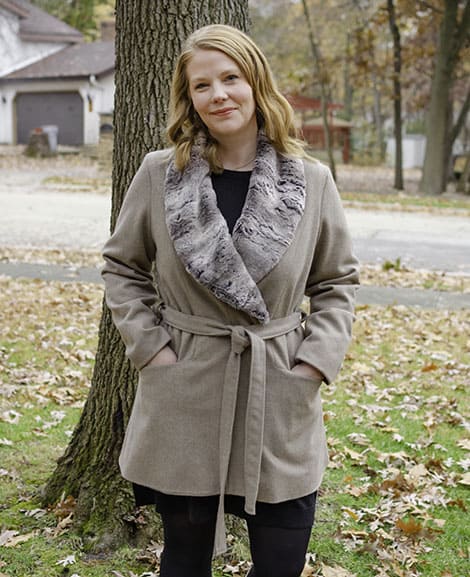
The Octave Coat in Melton wool with Cuddle lapel
100% wool can be quite pricey, for those on a budget we found Hobby Lobby had a lovely acrylic called ‘Faux Camel Coat’ that Tessa used. It turned out so lovely and was very affordable.
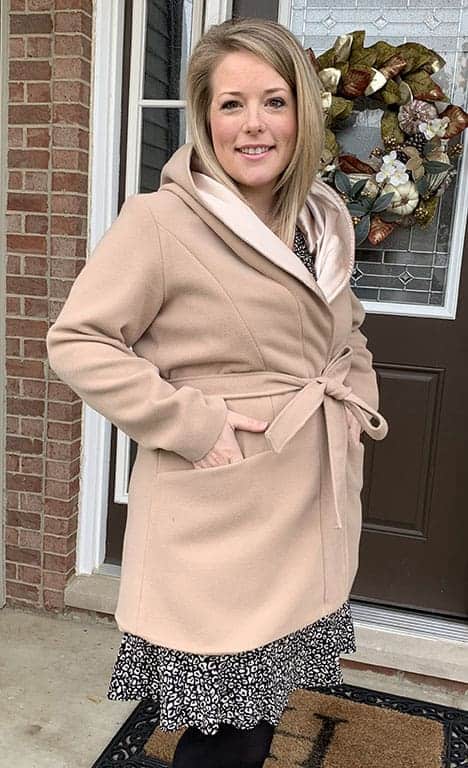
Octave Coat in Hobby Lobby’s Faux Camel Coat. A great, affordable option.
We also had several testers who used a suede fabric that had been bonded with a sherpa fabric. In my search I found this fabric easily at both Hobby Lobby and Joann! They even had different colorways. If you were to use this fabric, you wouldn’t want to line it. Such a cool look that is totally on-trend for this season.
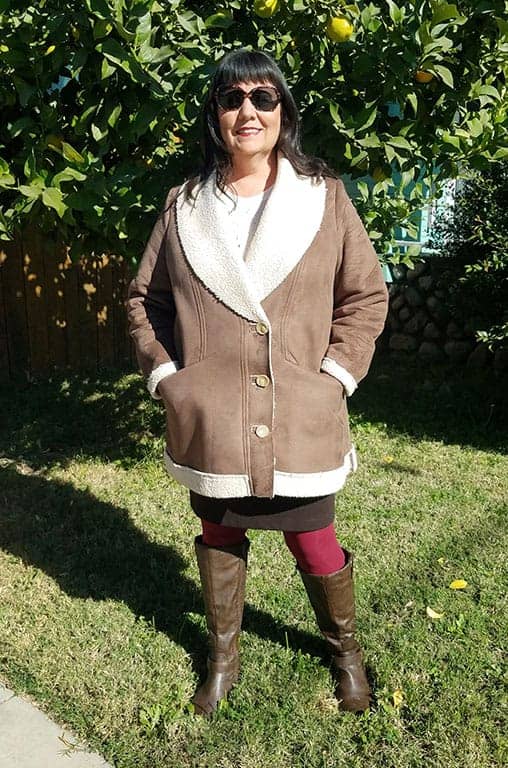
Octave Coat in sherpa lined suede. Sherril added a couple more buttons to her coat and turned the hem to the outside so we can see the sherpa fabric even better.
Knit fabrics
Even though the Octave Coat has been drafted for woven fabrics, there are a few types of knit fabrics that can be used. Using knit fabrics will give you a more casual look for everyday wear. For knit fabrics you want something heavy and thick. Even bulky would work very well. Here a few types that my testers and I found that worked really well-
- Sweatshirt fleece
- Heavyweight fleece such as the Luxe brand from Joann and Polartec from Discovery Fabrics
- Quilted double knits
- Sherpa
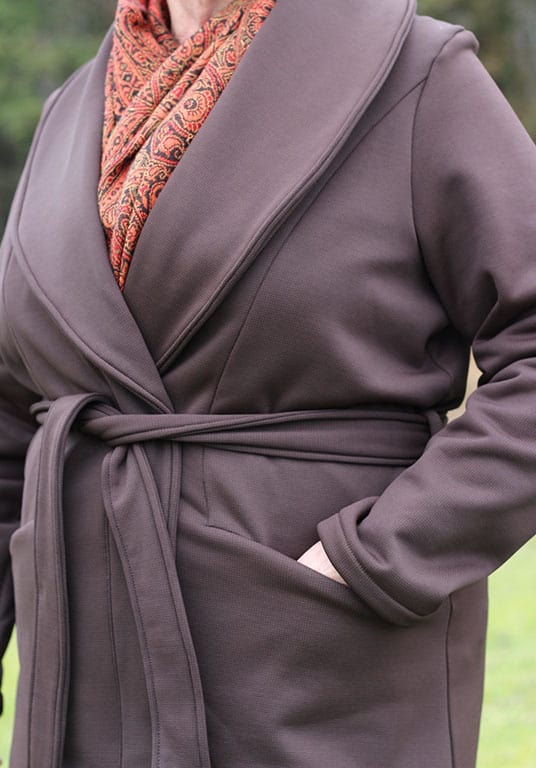
Octave Coat in Polartec Windpro Stretch
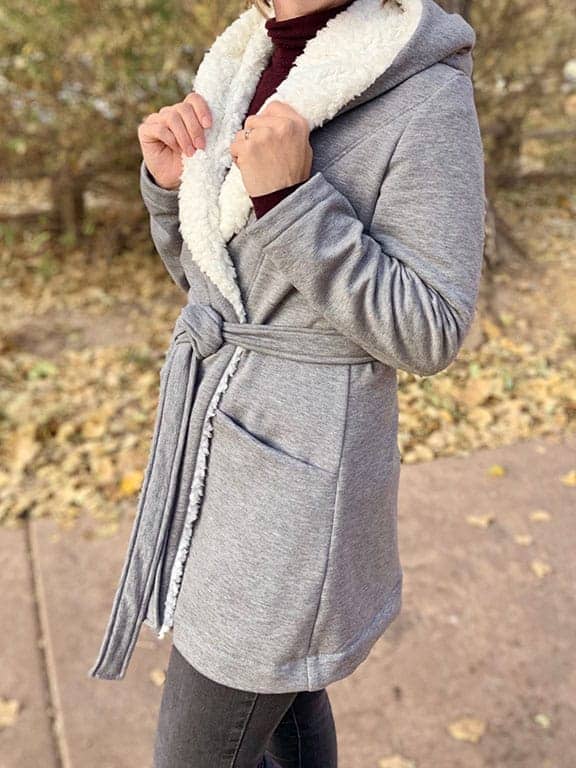
Octave Coat in sweatshirt fleece with sherpa-lined hood
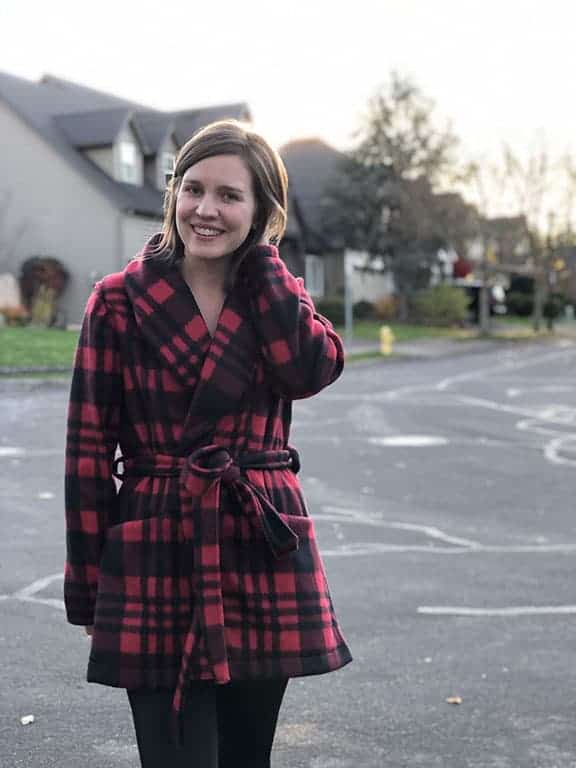
Octave Coat in a heavyweight fleece
About the lining
The final fabric to consider is the lining fabric. You may be tempted to line the coat with something like a flannel or fleece. While you sure can do that, consider at least using something silky for the sleeves to make getting it on and off easier. Ideally, you want to use the silky fabric for the entire lining. There is a pleat in the lining that adds ease and thus more mobility. If you want to add more warmth to your coat consider underlining it instead of subbing the silky lining with a warm fabric.
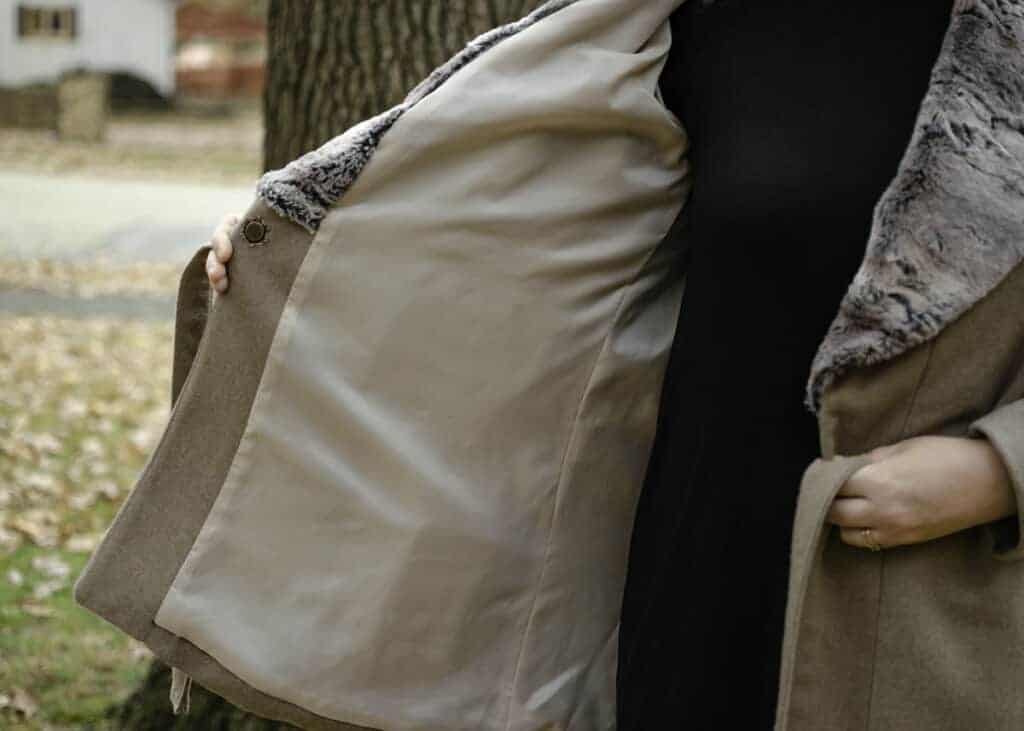
Octave Coat has an option for a full lining.
Get fabric shopping!
We have a few fabric shops who have kindly offered coupon codes in honor of the release of the Octave Coat pattern. We know what an investment sewing a coat like this can be so hopefully these discounts will help a bit.
Blackbird Fabrics: use code OCTAVE15 for 15% off fabric. Good until 11/28, one use per customers. Excludes giftcards, workshops, patterns and supplies. Also note that they have free US shipping when you spend $150.
Simply By Ti: use coupon code LNOCTAVE for 25% off all quilted knits. Expires Sunday, 11/24.
Raspberry Creek Fabrics: use code OCTAVE15 for 15% off through the end November.
Here are a couple of visuals for fabric shopping from Joann & Hobby Lobby.
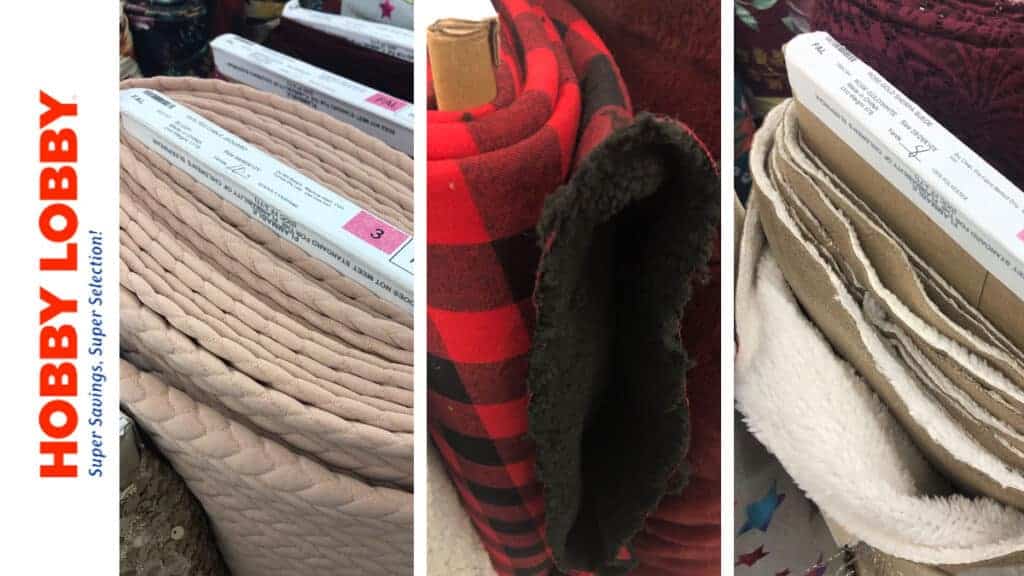
Hobby Lobby: quilted cable knit, sherpa bonded sweatshirt, sherpa bonded suede
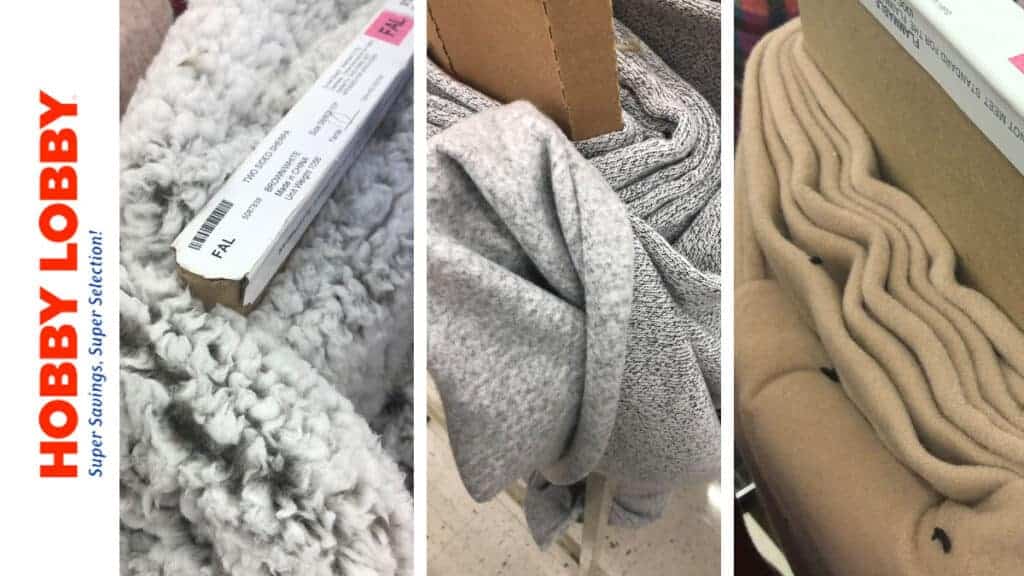
Hobby Lobby: double sided sherpa, sweatshirt fleece, faux camel coat
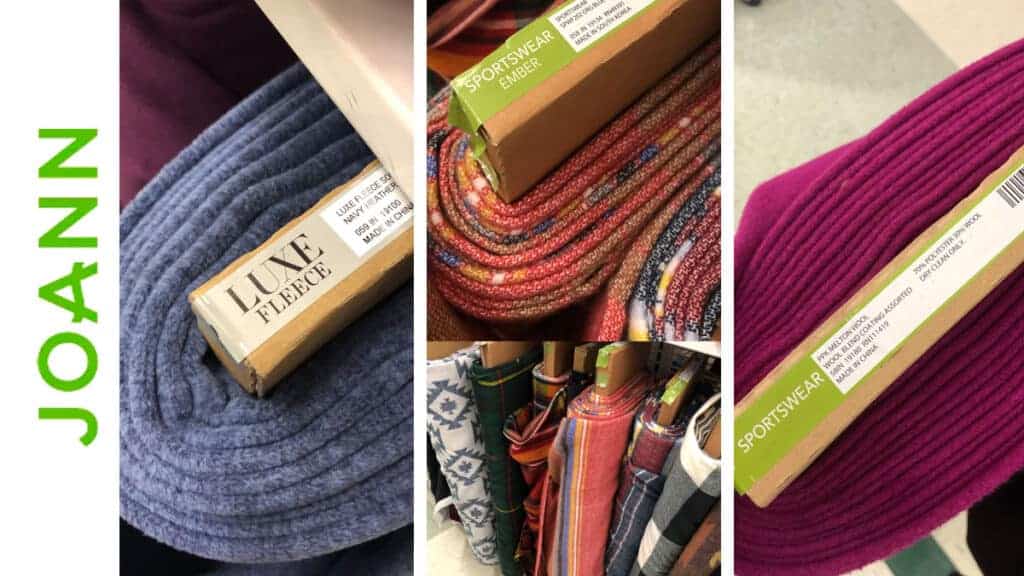
Luxe fleece, acrylic flannel, wool blend




